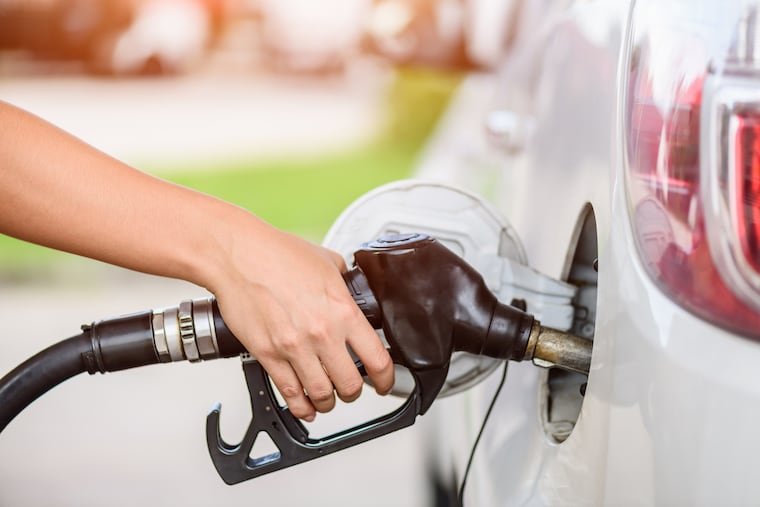Motormouth: Why you shouldn’t top off your tank
Columnist Bob Weber answers all your car questions.

Q: My 2005 Dodge V-6 Caravan (106,000 miles) suddenly refused gas with the pump constantly kicking off, as if full. Checking the internet, I found the problem was a carbon pollution canister above the gas tank. Replacement cost was around $800-$1,000. One mechanic told me to keep the tank at a quarter-full for a month. I did that, and the problem resolved itself about 2,000 miles later.
I’m still pumping with no problem. Can this problem actually resolve itself?
— R.P., Bath, Pa.
A: The fuel emissions canister is filled with charcoal, which traps and stores fuel vapors to keep them from escaping into the air while the car is parked. When you start the engine, a valve opens to allow those vapors to get sucked into the engine emptying the canister, readying if for the next time.
If you keep pumping gas once the nozzle clicks off, you may be forcing liquid into the canister. After a while, as it vaporizes, the charcoal dries out, but not always. A warning to all drivers: Do not top off your tank.
Q: What happens when I take my foot off the accelerator and just coast? Is any gas being used? Because my cars slow down so gradually there must be very little mechanical friction. Do the pistons ride up and down on a film of oil or is there actual metal to metal contact? Transmission information would be interesting, too.
— R.C., South Elgin, Ill.
A: Fuel usage depends on several factors. When you lift briefly, the fuel injectors continue to pulse. But at a predetermined engine speed (usually around 1,000-1,500 rpm) the fuel injection shuts off until the engine speed drops or you step back on the gas. If your car has an instantaneous fuel economy display, you may see it climb up to 99 mpg during a long coast.
During this time, the engine is still turning, and hence so is the oil pump. No metal to metal contact. Ditto for the transmission.
Q: The windshield in our new car displays both the speed we’re doing and also the speed limit. What transmits the speed limit information? Are there sensors built into the road or what?
— E.S., Lake Barrington, Ill.
A: You can thank the GPS system for tracking your speed and reporting the posted speed limit. You may notice that the information goes away when you are going through a tunnel.
Q: My car is a 2010 Infinity QX-56. While I have replaced the tires, I have never touched the spare. Should I consider replacing the spare when I get new tires this winter, or could I buy only three new tires and use the spare as a fourth? My concern is the age of the tire.
— B.A., Plymouth, Minn.
A: When you replace tires, you want them to all be the same size and age. Leave the spare alone, but check its pressure once in a while so that it is not flat if you need to use it. Although it may have some age on it, the spare will likely get you to a service facility.
Q: I have a 2012 Buick Verano with 21,000 miles. The oil is changed once a year. Tires are rotated every two years. I needed a new battery this winter. Other than the battery and tire rotation, I have spent nothing on this car, as it came with free lifetime oil changes. The nine-year anniversary is coming up soon. What should be done as far as preventive maintenance is concerned?
— J.C., Huntley, Ill.
A: Just keep on doing what you have been doing. Well, maybe you could get a bottle of Champagne and a birthday cake to celebrate.
ABOUT THE WRITER
Bob Weber is a writer and mechanic who became an ASE-certified Master Automobile Technician in 1976. He maintains this status by seeking certification every five years. Weber’s work appears in professional trade magazines and other consumer publications. His writing also appears in automotive trade publications, Consumer Guide, and Consumers Digest.
Send questions along with name and town to Motormouth, Rides, Chicago Tribune, 160 N. Stetson Ave., Fourth Floor, Chicago, Ill. 60601 or motormouth.tribune@gmail.com.